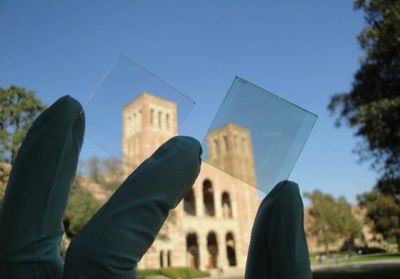Transparent solar to start long road to market
 The road to commercialization could be a long one, but researchers at the University of California Los Angeles are on the path to transparent solar cells that could be used to solarize windows and screens on electronics.
The road to commercialization could be a long one, but researchers at the University of California Los Angeles are on the path to transparent solar cells that could be used to solarize windows and screens on electronics.
Professor Yang Yang and his team published an article in the journal ACS Nano last month detailing their work and discovery.
“I feel very excited about this,” Yang said in a phone interview. “I feel like this could really be a game-changing technology.” Yang, who is also the Carol and Lwrence E Tannas Jr. Endowed Chair in Engineering, has long had an interest in solar and has done a lot of work in the field.
“But I always felt that if I were going to do something with solar is should have something unique, something different from all the other solar.” Transparency fits that bill perfectly.
Silicon solar photovoltaic cells will never be transparent and try as researchers might, it will be exceedingly difficult to develop a silicon solar cell that could be applied to building windows and car windshields that would still allow visibility.
Yang and his team at UCLA used transparent polymers that transform infrared light rather than visible light into electricity. “So, it’s less efficient than traditional solar,” Yang said. “But it could have a lot of other applications that others don’t.” It’s about 30 percent less efficient that standard solar today, he said. That lack of efficiency could be balanced with the ability to put solar in places where it can’t currently go – like the windows on the south side of a skyscraper.
While Yang has no doubt he and his team are onto something big, he knows the work is just beginning. It will take a while before the transparent solar cell technology can be commercialized. “Maybe five years, minimum,” he said. “Right now we’re working on a laboratory scale.”
The prototype the team has developed is tiny. It will need to be scaled up to larger sizes and proven on an industrial scale before it could make it to market. In most solar experiments, laboratory efficiencies are hard to duplicate at higher levels and takes significant research and development investment.
Lucky for the transparent solar technology, Yang said there are a lot of companies vying to form industrial partnerships with the university.



